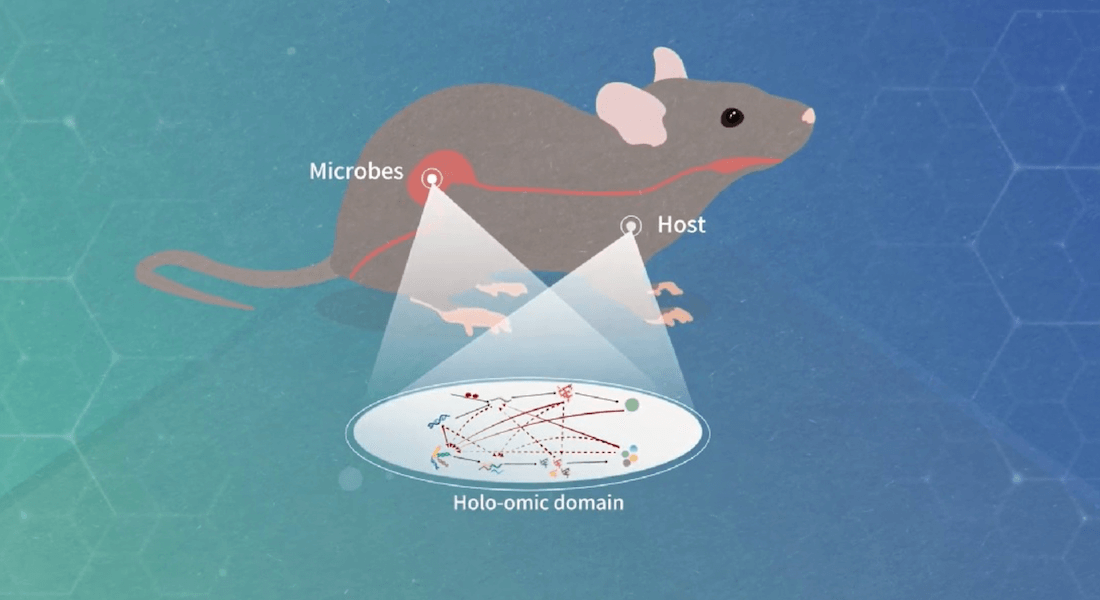New perspective on the interaction between host organisms and microbes can transform food production and medicine
Danish researchers in an international network are investigating how the interaction between host organisms and microbes could revolutionise everything from food production to medicine. The new research field, holobiont biology, presented in the journal Science, demonstrates that microbiomes play a crucial role in our understanding of genetic traits.

A new approach to studying living organisms in collaboration with their microbes is transforming our understanding of how humans, animals, and plants function. Danish researchers from the Globe Institute at the University of Copenhagen and Aalborg University are part of the international team presenting their insights in Science. This relatively new field, holobiont biology, marks a shift from viewing organisms individually to seeing the interaction between hosts and microbes as a single, integrated system.
Traditionally, research focused on host organisms isolated from their microbiomes—the complex communities of microorganisms like bacteria, fungi, and viruses that live on, in, and around all organisms. Recent research reveals that hosts and their microbiomes form a single system, called a holobiont, containing genetic information from both host and microbial genes, together known as a hologenome. This combined genome has shown to significantly impact the traits and health of the host organism.
Applied aspects of holobiont biology
Simon Bahrndorff, an associate professor at Aalborg University and co-author of the Science article, is part of the international research network The Holobiont Biology Network: "Initially, this is a new approach to all biological research, and it means re-evaluating some things we believe we know. But it's not just basic research. There are many potential applications of these insights that could impact everything from food production to disease treatment. For example, we could better utilize resources and thus improve food and feed production by enhancing natural microbiomes," says Simon Bahrndorff.
Examples from this new research field illustrate how microbiomes can support host survival and adaptability. In plants, microorganisms can influence root and leaf development and nutrient uptake, which could potentially be applied in a more sustainable and climate-resilient agriculture.
"Think, for example also, of the ongoing loss of biodiversity and species. Holobiont biology can help us understand that when we lose animals and plants, we also lose the microorganisms that have evolved alongside them. This is important because we become more aware of the microorganisms we are losing, and we can use that knowledge to boost the survival of current species by preserving their healthy microbiomes," says associate professor Morten Limborg from the Center for Evolutionary Hologenomics at the Globe Institute, University of Copenhagen and part of The Holobiont Biology Network.
The importance of the microbiome
Holobiont biology shows that microbiomes often have a significant influence on traits previously attributed to the host genome alone. It has been difficult to explain certain diseases and types of behaviour solely based on the host’s genome. Complex traits like body weight, cholesterol levels, and certain chronic diseases are often better understood by including microbial genomes—the entire hologenome. Research into microbiomes' roles in these traits addresses the so-called "missing heritability problem," where many traits cannot be explained solely by the host’s genes.
"It's a new way of looking at biology. By examining the interaction between hosts and microbes, we can better understand why certain traits manifest more strongly in one individual than another. It’s not about the individual anymore, but about the symbiosis between host and microbial traits," Simon Bahrndorff explains.
A worldwide collaboration
To advance holobiont studies, researchers have developed new methods to reveal how microorganisms and host genes influence each other. International databases like the Earth Hologenome Initiative collect and standardize data on microbiomes and holobionts worldwide. These data are used to analyze how, for instance, climate change and environmental changes can affect the interaction between microbiomes and hosts.
"The international network, The Holobiont Biology Network, is incredibly valuable as it ensures collaboration between research centers worldwide within this emerging field. As it is rapidly evolving, it’s a huge advantage to share methods and workflows to ensure data comparability and study complementarity," adds Assistant Professor Ostaizka Aizpurua from the Center for Evolutionary Hologenomics, Globe Institute, University of Copenhagen and part of The Holobiont Biology Network.
MORE INFO:
- The scientific journal Science published the article "The disciplinary matrix of holobiont biology" on November 14.
- The lead author is Professor Seth R. Bordenstein from the Department of Biology at Pennsylvania State University, USA. The authors are part of The Holobiont Biology Network.
- The global collaboration, Earth Hologenome Initiative, launched in 2020 to coordinate and standardise hologenomic research on wild species.
CONTACTS:
- Morten Limborg, Associate Professor, Center for Evolutionary Hologenomics, Globe Institute, University of Copenhagen. Phone: +45 61 28 29 84, Email: morten.limborg@sund.ku.dk
- Ostaizka Aizpurua, Assistant Professor, Center for Evolutionary Hologenomics, Globe Institute, University of Copenhagen. Phone: +45 35 33 49 13, Email: ostaizka.aizpurua@sund.ku.dk
- Simon Bahrndorff, Associate Professor, Department of Chemistry and Bioscience, Aalborg University. Phone: +45 24 41 15 58, Email: sba@bio.aau.dk
